Matt Williams
Point Guard, 61 170, 1989, Milwaukee Bucks
34 Minutes, 18 Points, 6 Assists, 2.7 Turnovers, 3.7 Rebounds, 1 Steal, 38% FG, 39% 3FG, 82% FT
Part One: Potential Impact and Fit
Then:
From an underrated perspective, Brandon Jennings, especially if he falls out of the lottery as expected. Most NBA teams just havent seen how talented he is because they werent allowed to watch him in high-school and he didn't play much in Europe. In the workouts people are starting to see the talent, but he has even more than that if you put him in a 5 on 5 setting. From the scrimmages I attended in Rome, the Synergy footage Ive watched and the game I was at, I was pretty floored. He has a chance to be pretty awesome.
-Fifteen Questions with Jonathan Givony (6/24/2009)
Now:
A few weeks before draft day, we reiterated just how good we felt Jennings could be. Despite averaging less than 20 minutes per-game, shooting under 40% from the field, and playing a constantly shifting role during his time in Italy, Jennings natural talent was too much for the Milwaukee Bucks to pass up with the 10th overall selection.
Blessed with outstanding athleticism and natural talent, Jennings has easily been the most pleasant surprise of this seasons rookie class a much needed stroke of luck for a Bucks franchise that accommodated his growth into a budding NBA star by opting not to match the Minnesota Timberwolves offer sheet to then-incumbent starting point guard Ramon Sessions.
With the luxury tax looming just above Milwaukees payroll figure, three of their top four scorers from the previous season signed to suit up elsewhere, and Michael Redd facing an uphill battle to round into form after tearing his ACL last January, the Bucks were nothing short of a best-case scenario for the then 19-year old Jennings.
With countless possessions at his disposal to make mistakes and a Head Coach tailor-made to help him improve on his weaknesses in Scott Skiles, Jennings has been a godsend for the 15-21 Bucks. While no one will dispute his talent at this point, if Jennings had landed elsewhere, there is a distinct possibility that he wouldnt be enjoying as much success as he currently is.
The Bucks sub-.500 record certainly isnt blowing anyone away, and they have really struggled as Jennings has fallen into a slump, but the fact that they are being led by a rookie point guard that almost no one saw as an immediate starter is noteworthy.
In spite of the negative publicity Jennings drew after failing to qualify to attend Arizona out of Oak Hill Academy, the persistent questions about his meager production in Italy, his current shooting slump, and the growing pains hes had to work through as both a person and player, Jennings NBA career is off to an outstanding start.
Part Two: Scoring Ability (Perimeter)
Then:
Perimeter shooting is the area that Jennings needs to work the most on if hes to come anywhere close to reaching his full potential as a scorerhes made just 22 of 99 attempts from beyond the arc in 43 games in both the Euroleague and Italian league this season, or 22%.
Jennings has a tendency to contort his body and fade away excessively on many of his attemptssomething hes been working on extensively with assistant Nenad Trajkovic, who was hired after Nando Gentile replaced former head coach Jasmin Repesa in December. Trajkovic worked for many years as an assistant and head coach with Serbian powerhouse Partizan Belgrade, widely considered the best team in European basketball in everything revolving around developing young players.
After every practice, Jennings works with Trajkovic on his shooting, getting up as many as 500 jumpers. He credits Trajkovic with helping him improve his mechanics significantly (going straight up and straight down, extending my arm, not fading away too much anymore, keeping on balance, not turning my hips a lot Jennings explains), and indeed his shot looked much better than advertised in the three practices we observed, although he still has plenty of room to continue to improve, particularly with his pull-up jumper.
-Brandon Jennings, Biding his Time in Rome (5/13/2009)
Now:
Last May when Jennings was finishing off of his tenure in Rome, we were fortunate enough to get an incredibly in-depth view of his situation during our European scouting tour, a luxury that shockingly few (if any) NBA teams opted to take advantage of, certainly not to the same extent.
At that juncture we found Jennings enlisting the services of Lottomatica assistant coach Nenad Trajkovic to craft himself into the jump shooter he is today: one capable of putting up 55-points in an NBA game and being a threat to exceed 20-points on any given night. The healthy appetite Jennings showed for shooting after practice has provided the most notable shift in his skill set from the last time we wrote about him on two fronts.
First, the consistency of his footwork and accuracy from beyond the arc have improved dramatically since last season. One of the biggest knocks on Jennings during both his high school days and throughout his foreign excursion was his outside jump shot.
Displaying erratic form and a penchant for taking off balance shots especially off the dribble Jennings work with Trajkovic seemed to get the ball rolling towards a sounder, more refined shooting mechanic that features excellent rhythm and significantly improved balance.
The dramatic effect that the tweaks Jennings has made to his form are clear in the outrageous differences in his situational shooting percentages from last season. Through 36 games this season, Jennings has scored 1.44 PPS (Points Per-Shot) in catch and shoot situations according to Synergy Sports Technology, good enough to land him in the 99th percentile League-wide and an astounding improvement from the 1.08 PPS he posted in such situations in 43 games last season with Roma.
Even with the slump Jennings has been in over the past few weeks, those numbers are nothing short of amazing considering that he shot 22% from beyond the European arc (substantially closer than the NBAs) last season .
Second, the level of confidence Jennings displays in his perimeter repertoire has risen noticeably from last season. Willing to step up and take responsibility as his teams primary option in the clutch, Jennings has developed the short memory and aggressive shooters mentality that will serve him well as he grows into a star Jennings hasnt let his recent struggles get into his head as hes continued to be aggressive.
As with many young guards thrust into a big role, the Compton native has had his fair share of issues with shot selection, something that isnt really a surprise all things considered.
An overwhelming 72% of his catch and shoot opportunities come in situations where he has a hand in his face, according to SST. However, in a testament to the way this season has gone thus far, Jennings has made 54% of such attempts, more than 10% better than when left open.
While the work Jennings did during his preparations for his rookie campaign have had eye-opening improvements in some aspects of his game, they havent been as beneficial to others; his catch and shoot numbers only tell a fraction of the story.
Though Jennings has clearly taken strides as a spot up shooter, he has a lot of work to do on other aspects of his perimeter game, particularly his pull-up jump shot. After shooting a torrid 49.3% from three in November, Jennings has seen his shooting percentages diminish significantly to the point that he shot just 32% from distance in December, and 29% thus far in January.
Despite the fact that his percentages are dropping, he continues to attempt even more 3-pointers each game, which will likely bring his numbers even further down to earth.
A large portion of that dip stems from his decision-making after he puts the ball on the floor, when he appears all too eager to force 20+ footers over defenders. Some of his willingness to force shots stems from poor shot selection as evidenced by the threes hes takes regularly off the dribble, but the fact that he takes it upon himself to be his teams first option and is easily the Bucks best shot creator doesnt help either.
Free to take the first available look he creates, Jennings is never shy when he sees an opening, but the bad habits he appears to have worked out of his spot-up jumper still limit the efficiency of his mid-range game.
Prone to fading away, relying heavily on his pull up under duress, and not always holding his release as religiously as he does when shooting off a catch much like he did when we saw him in Rome; Jennings converts just 34% on his shots off the dribble.
Compare that to his relative efficiency from a stand-still and it becomes apparent what has caused Jennings shooting to fall off the map, and where he needs to improve in the future. If he can take the steps necessary to improve his shot selection, continue to work on his mechanics, and translate his poise to his midrange game, history says hell do just fine.
His first month in the NBA was surely too good to be true, but for a player who was often-maligned for his shooting; it was certainly a very encouraging sign of progress.

Part Three: Scoring Ability (Slashing and Finishing)
Then:
The best things that Jennings brings to the table, though, definitely cant be taught. Hes incredibly fast in the open floor, highly fluid getting up and down the floor, and extremely natural changing directions sharply and attacking the rim. In todays NBA, where speed is absolutely at a premium like at no other point in time, Jennings has game changing potential as a shot-creator.
Look no further than the way a relatively unheralded player like Aaron Brooks has been able to put his stamp on this years NBA playoffs for evidence of how valuable a speed demon like Jennings can be in the right offense. All the bumping and hand-checking hes been learning to deal with all season long from European defenders might make life a lot easier for him once he reaches the NBA, where everything is much more open thanks to the defensive 3-second rules and much tighter officiating on the perimeter.
Harnessing that talent will be an ongoing process for Jennings, as he is not what you would call a polished player at this point. Turnovers remain a major issue for him--he commits one on 23% of his possessions in the Italian league according to our advanced stats, as he still lacks a great deal of experience operating in the half-court and is prone to making questionable decisions at times. He clearly lacks the strength to finish many of the plays around the rim hes able to create for himself at this level, so continuing to add strength to his lanky frame will also be a priority moving forward.
- Brandon Jennings, Biding his Time in Rome (5/13/2009)
Now:
One of Jennings biggest weaknesses, as we identified last summer, lies in his lack of physical strength. Extremely quick and agile with the ball, he has proven time and time again that he can get to where he wants to go on the floor with relative ease.
Able to explode out of his crossover in a manner reminiscent of Allen Iverson, Jennings is a nightmare for the majority of the League to stay in front of. Under the NBAs current hand-check rules, Jennings is able to use his full repertoire of hesitations, stutter steps, and in-and-out moves to create driving angles that few guards have the quickness to cut off.
While no one is going to question Jennings mobility in half-court sets, one of the biggest knocks against the young guard is his inability to convert the shots he creates for himself at the rim.
According to our friends over at hoopdata.com, Jennings only converts a paltry 42% on his shots at the rim, one of the lowest rates of any point guard in the NBA a problematic ranking for a player capable of getting to the rim at will.
This is a topic that was discussed in an in-depth article by Kevin Pelton today on Basketball Prospectus.
Many of the issues Jennings had around the rim in Europe persist in the NBA. Though hes able to find seams to the rim, he frequently appears uncomfortable once he gets there. Despite his excellent leaping ability, Jennings struggles excessively with contact, failing to shield the ball and finish strong, and regularly finds himself smothered by rotating post defenders. His skinny frame hurts his effectiveness in the paint, since he struggles to even get the ball up on the rim after he takes a bump. Perhaps the more pressing issue is that he hasnt yet learned the nuances of drawing fouls effectively. Over time, Jennings needs to hone that craft to maximize the offensive potential of his outstanding athleticism, as there is simply no reason why he should be converting just 39% of his 2-point attempts, one of the worst rates of any player in the NBA.
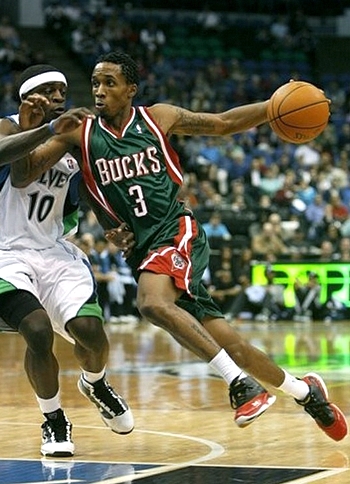
While Jennings certainly has a lot of things to work on, one scout we talked to was impressed by his efforts to develop his floater. One of the hardest shots in basketball, Jennings shows a deft floater from time to time, which certainly bodes well for him in the future, but still has a hard time converting in traffic. With opposing teams able to game plan around Jennings with Michael Redd ailing and now out for the whole season, hes going to face a lot of adversity from the mid-range in, a real challenge that should prove invaluable to his long-term development.
Part Four: Playmaking
Then:
In the second quarter, Jennings comes up with a steal and has a three on two transition opportunity. Not seeing the angle he was looking for, he pulls the ball out, waits for his teammates to run down the floor and calls a play, to the shock of everyone in attendance who had watched him play in America. The Brandon Jennings of old would have never passed up that opportunity the Director of Player Personnel sitting next to us points out while nodding his head. Gotta limit those turnovers Jennings explains to us afterwards. My job is to be a pass-first point guard.
A similar theme ensues for the rest of the night, as Jennings refuses to force the issue time after time, not hunting shots in the least bit, looking extremely focused on facilitating the offense, making the extra pass to the point that you may have wondered if hes being a bit too passive even. Another transition opportunity occurs after yet another steal, and Jennings connects with Ibrahim Jaaber on a perfect give and go pass for an easy layup, as the ball doesnt even touch the ground once.
-Brandon Jennings, Biding his Time in Rome (5/13/2009)
What separates him from the Aaron Brooks and Monta Ellis types of the world, though are his playmaking instincts. His talent and creativity with the ball were always evident in the games, scrimmages and practices we saw, as he sees the floor and is capable of making incredibly difficult passes look easy, in a way that no point guard in this draft not named Ricky Rubio can. Over the course of our three days in Rome, we saw Jennings make a handful of mind-blowing plays that hint of an incredible future that is in store, particularly in transition or running the pick and roll.
-Brandon Jennings, Biding his Time in Rome (5/13/2009)
Now:
Anyone who had the pleasure of watching Jennings early in his high school career got a taste of his instincts as a playmaker, and his play last season Italy spoke of his potential to translate his passing ability to the NBA level. A gifted passer who shows the ability to thread the needle in traffic and put the ball right on the money running full speed in transition, the biggest positive changes in Jennings game from the beginning of this season to now both qualitatively and quantitatively- reside in his merits as a point guard.
Statistically, Jennings has clearly come a long way from last season, and even from last month. During his season playing in the Euroleague, he posted an assist to turnover ratio of only 1.37, a representation of the difficulties he had translating his natural instincts into his role as a change of pace scorer. Fast-forward to his first month as a pro, Jennings showed marginal improvement in November, posting an A/TO ratio of 1.75 an adequate mark for a rookie floor general. During the month of December, Jennings posted a mark of 2.91, likely thanks in no small part to the return of Michael Redd.
Clearly deferring to Milwaukees recovering franchise player, Scott Skiles impact on Jennings is apparent at times. During November many of Jennings assists were the result of his knack for the things that arent easy to teach. Extremely good at putting the right amount of touch on his lob passes and hitting his teammates in stride, Jennings has excellent court vision allowing him to be highly effective working off the pick and roll in half-court sets, scenarios that account for roughly half of his offensive possessions. Jennings made a conscious effort to involved Redd in Milwaukees offense to a fault, sometimes hesitating when hes created his own shot and unselfishly sacrificing his offense to create for others. With Redd now out for the season, it will be interesting to see how the rest of Jennings season plays out.
Though Redds presence had refocused Jennings passing, the biggest change in the young floor general as a point guard from last season to this season in a qualitative sense lie in his comfort level operating in traffic. Many of his turnovers early this season were the result of losing the ball either after being trapped or when trailed by a defender in transition. Skiles influence is clear in the way Jennings now controls the ball. No longer prone to letting defenders sneak up on him, Jennings does a better job of using his body to shield the ball when pushing it up the floor. Hes also appeared more decisive on his drives.
From day one, Jennings has looked extremely aggressive running the pick and roll, but he seems more poised and disciplined with the way hes been attacking the lane. Many of his drives that resulted in turnovers earlier this season were the result of allowing the defense to string his drives out to the wings, allowing additional defenders to get involved. Recently, the former McDonalds All-American has been more composed when he turns the corner. Instead of forcing drives across the court in an effort to turn the corner after using screens, he has been better about using his first step to get to the elbow and then kicking when he sees defenders respond. Though he still makes his fair share of rookie mistakes, this newfound discipline has helped Jennings maintain the spacing in the Bucks offense and has increased his assist numbers while decreasing his turnovers.
Considering how natural a passer Jennings is in terms of pure court vision, he would be well served to continue developing this part of his game rather than attempting to become an Allen Iverson-type scorer, as that would clearly give his team a much better chance of winning games. Hes already shown an extremely quick trigger early on in his career, ranking 16th amongst all NBA players in field goal attempts per-40 minutes pace adjusted, despite the fact that he converts just 39% of his attempts.
Part Five: Defense
Then:
Defensively, Jennings is making noticeable strides, but still has room to improve. On one hand, he seems to be putting a pretty good effort into his man to man defense, showing really nice lateral quickness staying in front of his man and better fundamentals than we saw in the past. On the other hand, he lacks significant strength and seems to get pushed off the ball far too easily, having a difficult time getting around screens as well. His team defense is definitely a work in progress, as he looks a bit lackadaisical staying aware of where the ball is on the floor, and is not showing the greatest hustle going after loose balls or trying to help out on the glass.
-Brandon Jennings, Biding his Time in Rome (5/13/2009)
Now:
In the same way that it limits his finishing ability at the rim, Jennings lack of physical strength hurts him defensively, as we repeatedly noted. At this point, Jennings is a mixed bag on the defensive end. There are certain scenarios where he excels because of his physical tools, but others where he is inherently limited. Perhaps the best thing that can be said about Jennings defense at this point is that his effort level is considerably better than it was in Italy, which is a major step for a player as young as he is.
In terms of weaknesses, there are three key areas where Jennings seems to struggle. First, as we saw last season, he has an extremely hard time working around screens. Appearing even leaner than his listed 169 pound weight because of his rangy frame, even a player as quick as Jennings cant always recover from a well-set ball screen.
Second, he is a clear liability against stronger, more compact guards in the post. Whether his man posts up in a traditional sense or is able to get a step on him in an isolation situation, once Jennings is in a compromised position on his mans shoulder, he doesnt have the strength to regain any ground to contest the shot.
Third, and finally, Jennings still struggles with some of the fundamentals, especially in the way he defends the perimeter off the ball. Periodically getting turned around when making rotations and often leaving his feet when closing out shooters, Jennings is definitely still learning what it takes to be a sound defensive player on the NBA level.
While there are certainly a number of deficits in Jennings defensive abilities, hes exceedingly good in other areas. His quickness allows him to pressure the ball extremely well from end to end, allowing him to pester opposing point guards with a one-man press. He also shows a willingness to pursue loose balls, whether it be rebounding or looking for a steal. More than anything else, the fact that Jennings gets in a stance and doesnt give up on plays as frequently as he used to is a huge step towards his development into a respectable NBA defender.
Part Six: Readiness and Maturity
Then:
Despite the fact that his playing time has largely evaporated over the past six weeks, Jennings is taking everything in stride, handling himself with maturity not found amongst players 10 years his senior here in Europe. Thats just the hand Ive been dealt Jennings says with a smile and shrug. If I could do it all over again, I probably would have signed with a smaller team, but things havent worked out that bad.
-Brandon Jennings, Biding his Time in Rome (5/13/2009)
Now:
Considering all the criticism Jennings received (surely from our direction as well) for his decision to go overseas and his Green Room debacle on draft day, hes certainly taken everything in stride. The hard-line style of former Lottomatica coach Jasmine Repesa seemed to ignite a maturation process in Jennings that continues today. Showing a willingness to learn, playing with a passion that has earned him the respect of his teammates, and working tirelessly in practice, the humbling experience Jennings had in Europe has been integral in the success hes found in the NBA.














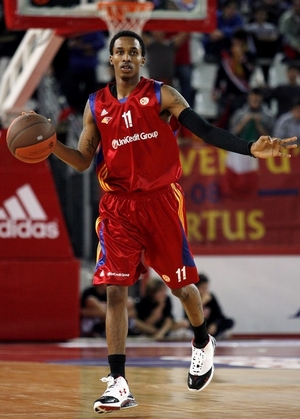




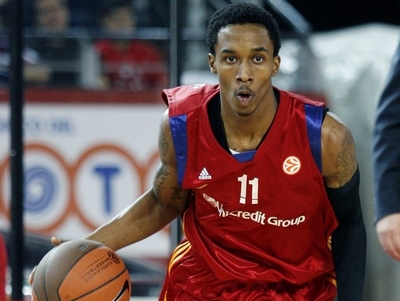


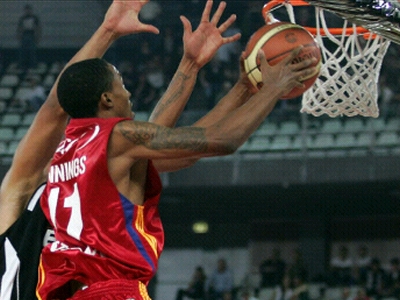
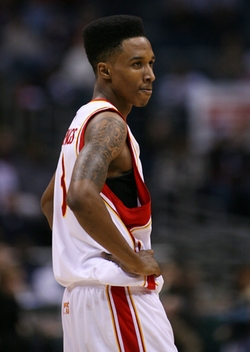
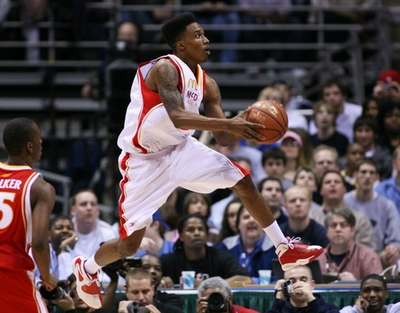








Comments